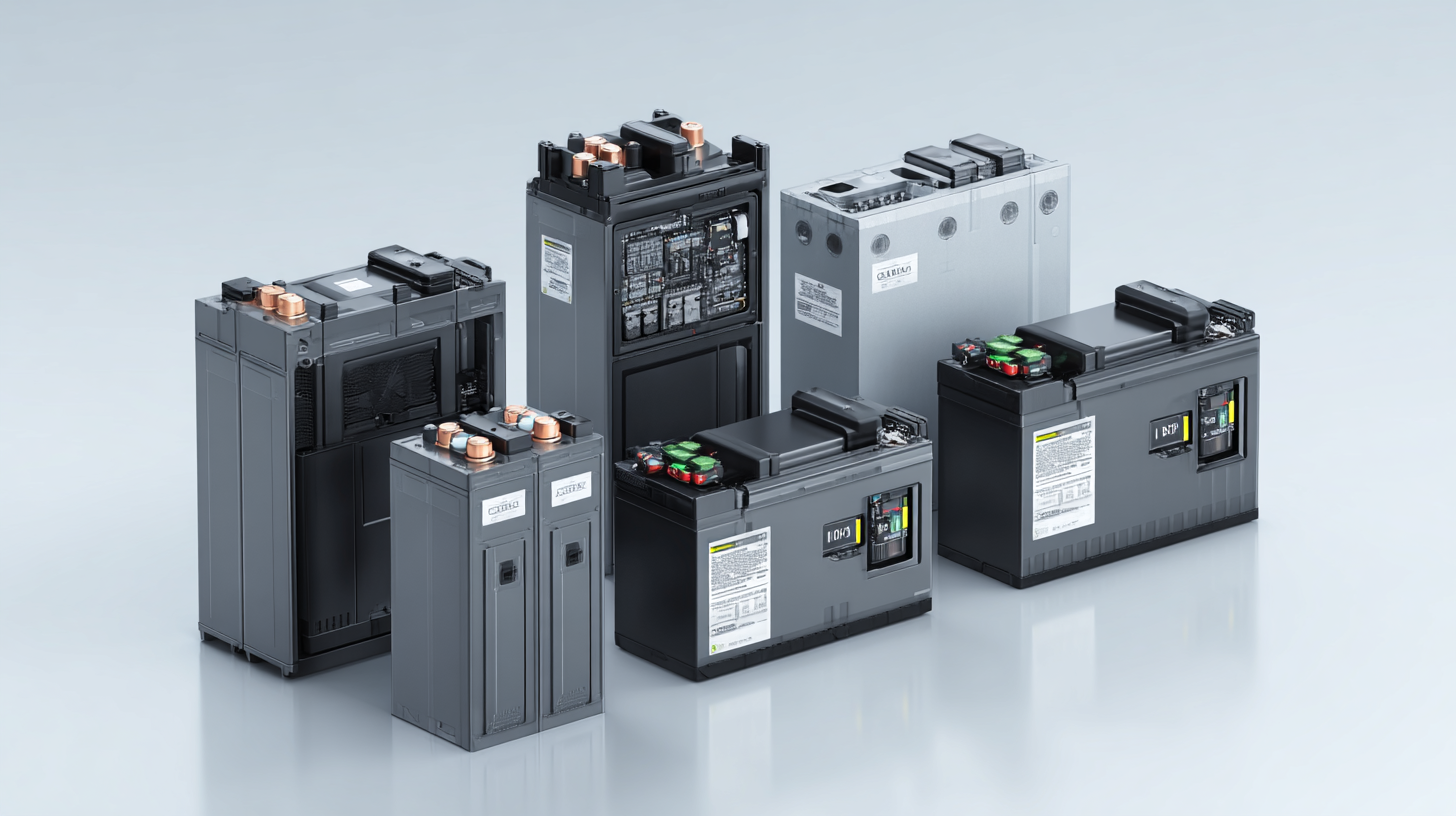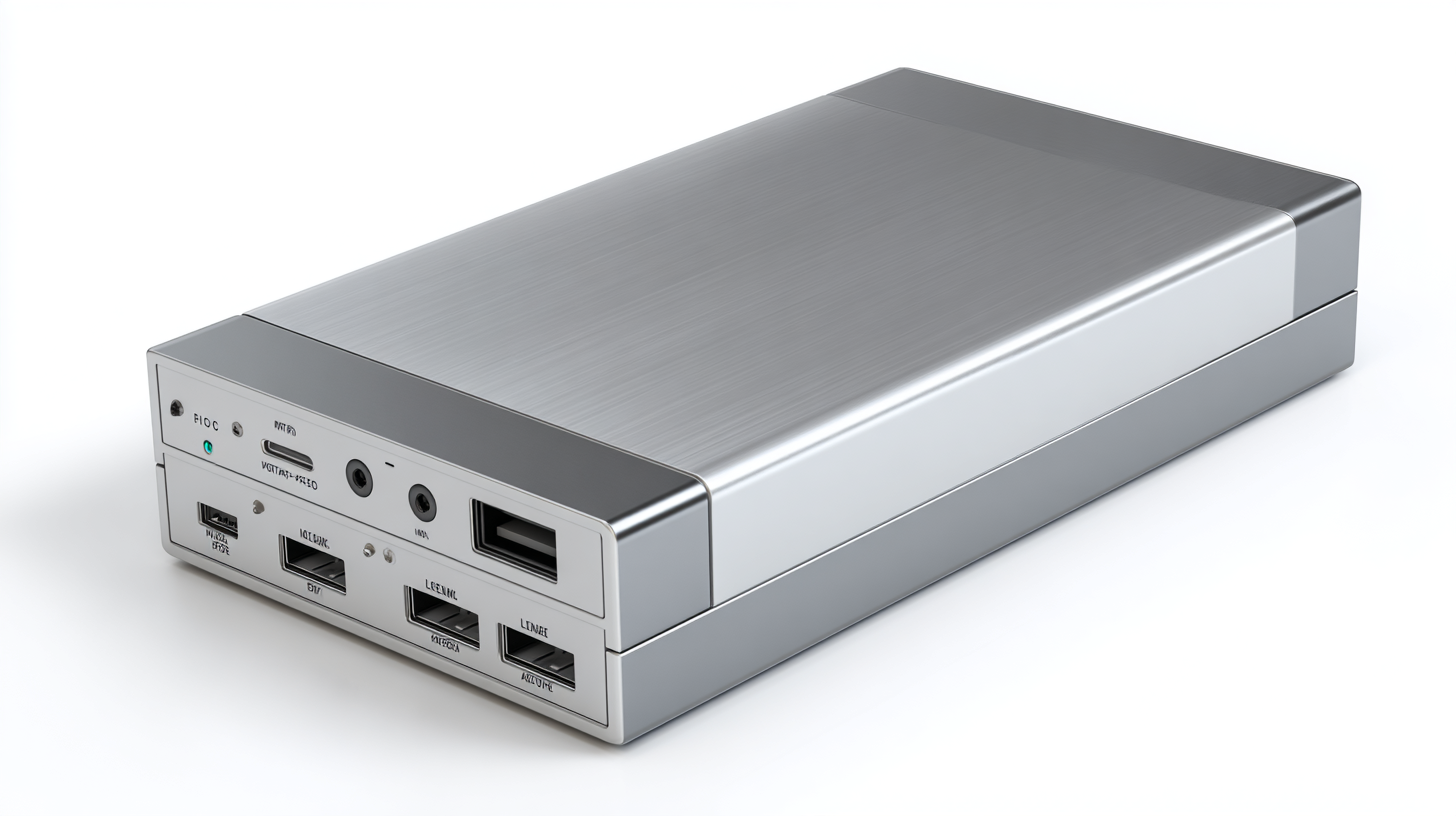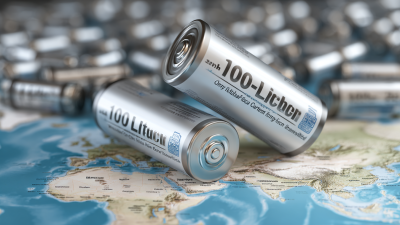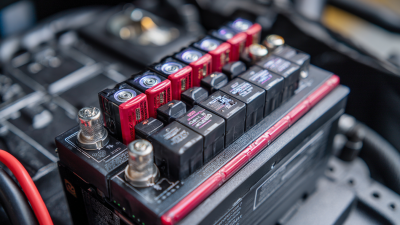In today's rapidly evolving energy landscape, the demand for efficient and reliable power sources has led to the increasing popularity of Lithium Phosphate Battery Packs. According to a recent market report by Research and Markets, the global lithium battery market is expected to reach $100 billion by 2025, with lithium iron phosphate (LiFePO4) batteries accounting for a significant portion due to their safety, stability, and longer lifecycle compared to traditional lithium-ion batteries. These characteristics make Lithium Phosphate Battery Packs an attractive option for a variety of applications, from electric vehicles to renewable energy storage systems. As consumers and businesses alike seek to optimize their energy solutions, understanding how to choose the best Lithium Phosphate Battery Pack tailored to specific needs becomes paramount in securing both efficiency and sustainability.

Lithium Iron Phosphate (LiFePO4) batteries have emerged as a popular choice in energy storage technology due to their distinctive features and benefits. One of the key advantages of LiFePO4 is their thermal stability, which significantly enhances 安全性 performance compared to traditional lithium-ion batteries. With advancements in sensing technology, monitoring the thermal safety characteristics of these batteries has become more efficient, therefore decreasing the risk of thermal runaway incidents. Additionally, LiFePO4 batteries exhibit a longer life cycle, making them an economically viable option for both consumer and industrial applications.
Moreover, the increase in electric vehicle adoption has boosted research into various battery technologies, including Lithium Manganese Iron Phosphate (LMFP) and sodium-ion batteries. While LMFP batteries offer competitive advantages, particularly in manganese supply structures, lithium iron phosphate remains a favorite for its proven reliability and efficiency. As the market evolves, understanding the techno-economic aspects of different battery technologies becomes essential in selecting the best battery pack for specific needs, balancing performance, cost, and environmental impacts effectively.
When selecting a lithium phosphate battery pack, understanding battery capacity and voltage is crucial to ensure that it aligns with your specific energy needs. Battery capacity, typically measured in amp-hours (Ah), indicates how much energy the battery can store. This means that if you plan to power a device for an extended period, you’ll need to choose a battery with sufficient capacity. For example, if your device consumes 10 amps of current and you desire to run it for 5 hours, a battery with a minimum capacity of 50 amp-hours would be required.
Voltage is equally important, as it needs to match the requirements of your application. Lithium phosphate batteries typically operate at nominal voltages of 3.2V per cell. Depending on the system’s voltage requirements, you may need to connect several cells in series to achieve the desired output. It’s essential to verify the voltage compatibility with your devices to avoid performance issues or potential damage. Thus, carefully assess both the required capacity and voltage before making a decision, ensuring that you select a lithium phosphate battery pack that meets your operational demands effectively.
When choosing a lithium phosphate battery pack, understanding the importance of cycle life is crucial for ensuring its longevity. Cycle life refers to the number of complete charge and discharge cycles a battery can undergo before its capacity significantly decreases—data indicates that lithium iron phosphate (LiFePO4) batteries typically offer 2000 to 5000 cycles, depending on usage and care. This extended cycle life not only reduces the frequency of battery replacements but also lowers the overall cost of ownership over time, making them a worthwhile investment for applications ranging from solar energy storage to electric vehicles.
**Tip:** Always check the manufacturer's specifications for cycle life and warranty terms. A higher cycle life often indicates better materials and technology, inspiring confidence in the battery's long-term performance.
Moreover, factors such as depth of discharge (DoD) and operating temperature play a vital role in determining the actual cycle life experienced by users. For example, maintaining an optimal DoD of 80% can significantly enhance cycle performance. In a comprehensive report by the Electric Power Research Institute (EPRI), data suggests that batteries operated within these parameters can achieve an increase in cycle life of up to 30%.
**Tip:** Monitor your battery's usage patterns and maintain a balanced charging strategy to maximize its lifespan. Implementing smart charging solutions can help in achieving this goal, ultimately protecting your investment in lithium phosphate technology.

 When selecting a lithium phosphate battery pack, safety considerations play a crucial role, especially when compared to other battery chemistries such as lithium-ion or lead-acid. Lithium phosphate batteries are known for their enhanced thermal stability, which significantly reduces the risk of overheating and thermal runaway. This means that in high-temperature environments or during prolonged use, lithium phosphate batteries are less likely to catch fire or explode, making them a safer choice for demanding applications.
When selecting a lithium phosphate battery pack, safety considerations play a crucial role, especially when compared to other battery chemistries such as lithium-ion or lead-acid. Lithium phosphate batteries are known for their enhanced thermal stability, which significantly reduces the risk of overheating and thermal runaway. This means that in high-temperature environments or during prolonged use, lithium phosphate batteries are less likely to catch fire or explode, making them a safer choice for demanding applications.
Additionally, lithium phosphate batteries offer a longer cycle life than their counterparts. They can endure a higher number of charge and discharge cycles without a significant decline in performance. This durability not only ensures consistent safety during its lifespan but also reduces the frequency of replacement, making them an economically sound option over time. In contrast, other batteries may suffer from reduced lifespan and reliability, especially under rigorous operating conditions, highlighting why lithium phosphate batteries are increasingly favored in applications where safety and longevity are paramount.
When selecting a lithium phosphate battery pack, the importance of choosing a reputable manufacturer cannot be overstated. Quality assurance and the presence of necessary certifications are paramount, especially in the context of
increasing scrutiny and regulation in the lithium battery sector. Recent industry reports indicate that the quality compliance rate for battery products stands at a concerning
56.4%, which raises significant red flags regarding safety and reliability. This low compliance is attributed to inadequate management practices and oversight in manufacturing processes. As recent news has highlighted, the Civil Aviation Administration has tightened 3C certification requirements due to safety incidents linked to lithium batteries, reinforcing the demand for rigorously certified products.
In the current landscape, manufacturers must demonstrate stringent quality control throughout the battery production lifecycle. This includes adhering to recognized international standards and obtaining relevant certifications that ensure product safety. As thermal runaway incidents associated with lithium batteries have become more frequent, choosing a manufacturer that prioritizes
quality and safety can help mitigate risks. Experts advocate for a comprehensive management approach that encapsulates every phase of production, highlighting the necessity for potential buyers to conduct thorough due diligence before committing to a battery pack purchase.
Prioritizing established brands with robust quality assurance mechanisms can significantly enhance user safety and product performance.








